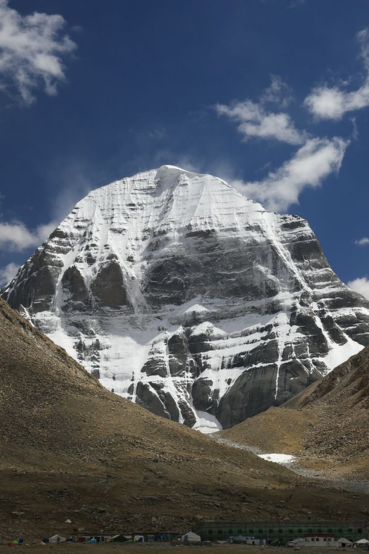Take, for example, the rice we consume daily — it doesn't just miraculously land on our plates. It starts as a small seed, thrust into the muddy ground. It grows with time, is cultivated, and eventually harvested, processed, and cooked into something incredibly rewarding.
The Bhaktapur Bisket Jatra is no exception.

The Seed: A King's Fascination and a Serpent's Curse
Centuries ago, when the Malla kings reigned — a period of rich art and great monuments — King Jagjyoti Malla of Bhaktapur sowed the seed of Bisket Jatra. Yet it was not constructed on the foundations of just happiness. It was an offspring of myth, mystery, and a touch of the otherworldly.

His favorite tale was one about a princess who was cursed to remain forever unmarried because every groom who married her would die mysteriously on their wedding night. The palace was in terror, until one bold and determined young man defied all warnings — even those from his own mother — and accepted her hand in marriage.
But this time, fate would change. An elderly woman (actually Goddess Bhadrakali in disguise) advised him with a single key phrase: "Remain awake."

During the wedding night, when the princess lay peacefully asleep, the young man stayed awake. What he witnessed then was terrifying — two snakes crawled out of her nostrils. Without hesitation, he drew out his dagger and cut the snakes before they could take any other life.
The curse was broken. The serpents were defeated, the marriage consummated, and the kingdom rejoiced.
King Jagjyoti Malla, touched by this tale of bravery and rebirth, decreed that Bisyaku Jatra — now known as Bisket Jatra — would be celebrated every year in Bhaktapur, so the legend would never perish.

The Sprouting: From Story to Festival
The legend took root in the soul of Bhaktapur. Each element of the mythology was translated into powerful rituals.
The serpent's demise? Symbolized by toppling huge lingo (55-ft high wooden poles).

The bride and the groom? Represented in the form of two giant chariots — one carrying Lord Bhairab, the other Goddess Bhadrakali — crashed into one another with tremendous force, signifying their union.
The cursed nights and spiritual cleansing? Marked with days of color, chaos, and celebration.

The Growth: Rituals Throughout the City
As rice shoots burst forth in a paddy, the festival bursts forth over Bhaktapur — spiritually, but also physically. Two massive lingo poles are hand-constructed on New Year's Eve through the strength and coordination of local men in the presence of smiling viewers.
The energy then cascades through the city as processions of giant chariots, and masked dancers make their way through the ancient streets of Bhaktapur. Thousands of citizens flood the narrow streets, pulling on heavy ropes in a frantic tug-of-war between competing neighborhoods — both sides determined to win this symbolic battle.

The air resonates with the tones of traditional music and the beat of dhaa drums, and the aroma of rice beer and special delicacies wafts through every courtyard. Bisket Jatra is not a single-day celebration — it's a nine-day spectacle, this year taking place April 11-18, that ushers in a godly, festive chaos that lingers in every corner of the city.
The Risk: A Festival of Fierceness
While rice harvesting is dangerous with heavy loads and sharp sickles, Bisket Jatra also offers dangerous thrills.

There are stories every year — sometimes tragic ones — of people getting injured or trampled under the falling lingos or the wheels of chariots. But like farmers who weather the tempest for a rich harvest, Bhaktapur's citizens take the risks, because Bisket Jatra is not a spectator sport — it's a living battlefield of faith and myth.

The Celebration: A City in Sacred Motion.
When the time for Bisket Jatra comes, Bhaktapur does not only celebrate — it lives. The old city turns into a living, breathing stage where every part of it becomes an actor in the drama that is enacted. The streets are filled with people for nine days as huge chariots bearing the images of Lord Bhairab and Goddess Bhadrakali are pulled along the narrow streets. These are not quiet processions.

They’re fierce and loud, with ropes tugged by rival neighborhoods in a test of power, pride, and unity. The chariots clash dramatically in Taumadhi Square, reenacting the powerful union of the mythic bride and groom.
When the sun goes down, the festivities don't. Men straight lingo poles—enormous wooden pillars—through ancient methods and raw muscle power, with the crowd cheering them on. The folk music resonates in Bhaktapur. Dhaa drums, flutes, and traditional folk songs provide rhythm to the celebration . Kids chase dancers wearing colorful masks as myths of gods and devils are reenacted in front of their eyes.

Houses are filled with laughter and the aroma of Newari dishes — samay baji, bara, chatamari, and freshly prepared aila are in plenty. The family gets together, exchanging food, stories, and blessings, and the elderly go to temples, applying red powder on their foreheads and offering rice and flowers to the gods.
Even tourists get caught up in the celebration. They are invited by locals, eager to share their heritage, to pull on the ropes, try the food, and feel Bhaktapur's pulse.
Ordinary life stops for a few days, and the whole city joins in this ritual pageant. It is not so much a remembrance of a myth — it is a reliving of it, year after year, as if time itself is complete in the swirl of drums, dust, devotion, and festivity.
The Feast: The Jatra Today.
What started as a king's tribute to a powerful myth has become one of Nepal's most vivid and colorful festivals. Bisket Jatra brings the people of Bhaktapur together in a rare show of unity and shared heritage, keeping alive centuries-old beliefs that continue to shape the city's identity.

It is a reminder of the final victory of good over evil, the bravery to love despite fear, and the power of traditions that endure, just like the huge lingo poles at the heart of the festivities. And even as a plate of hot, healthy rice replenishes body and soul after its long journey from seed to table, Bisket Jatra replenishes Bhaktapur's cultural psyche — year after year, ritual after ritual, myth after myth.
Photos from: www.bhaktapur.com/








